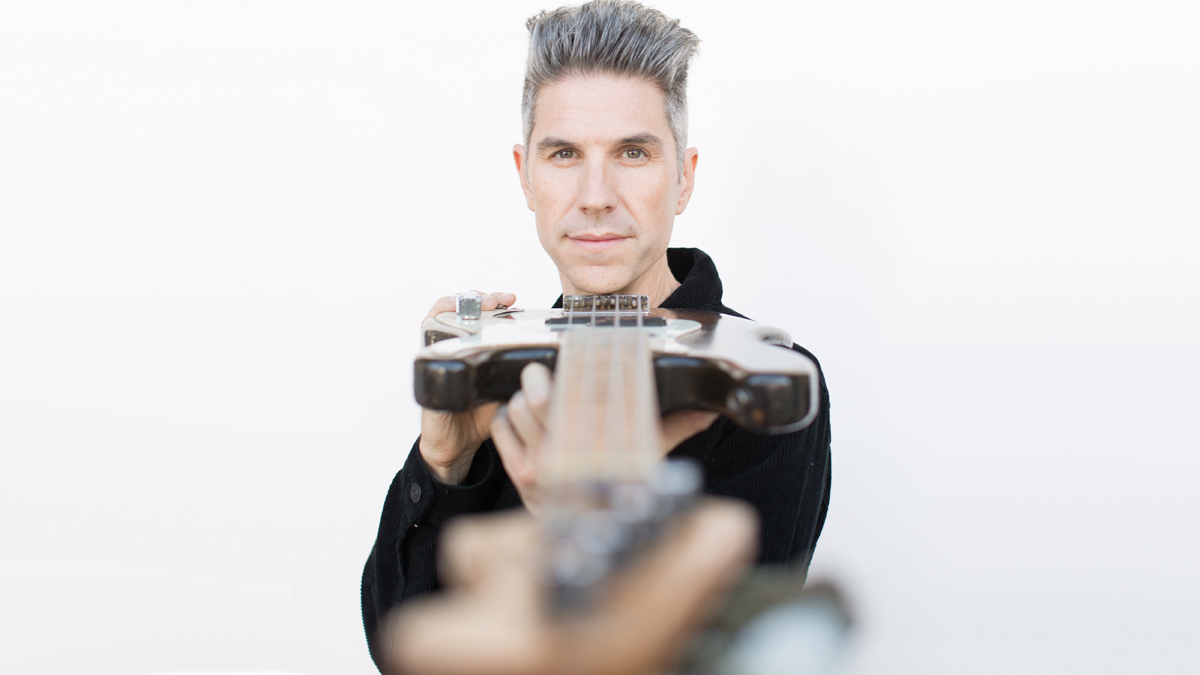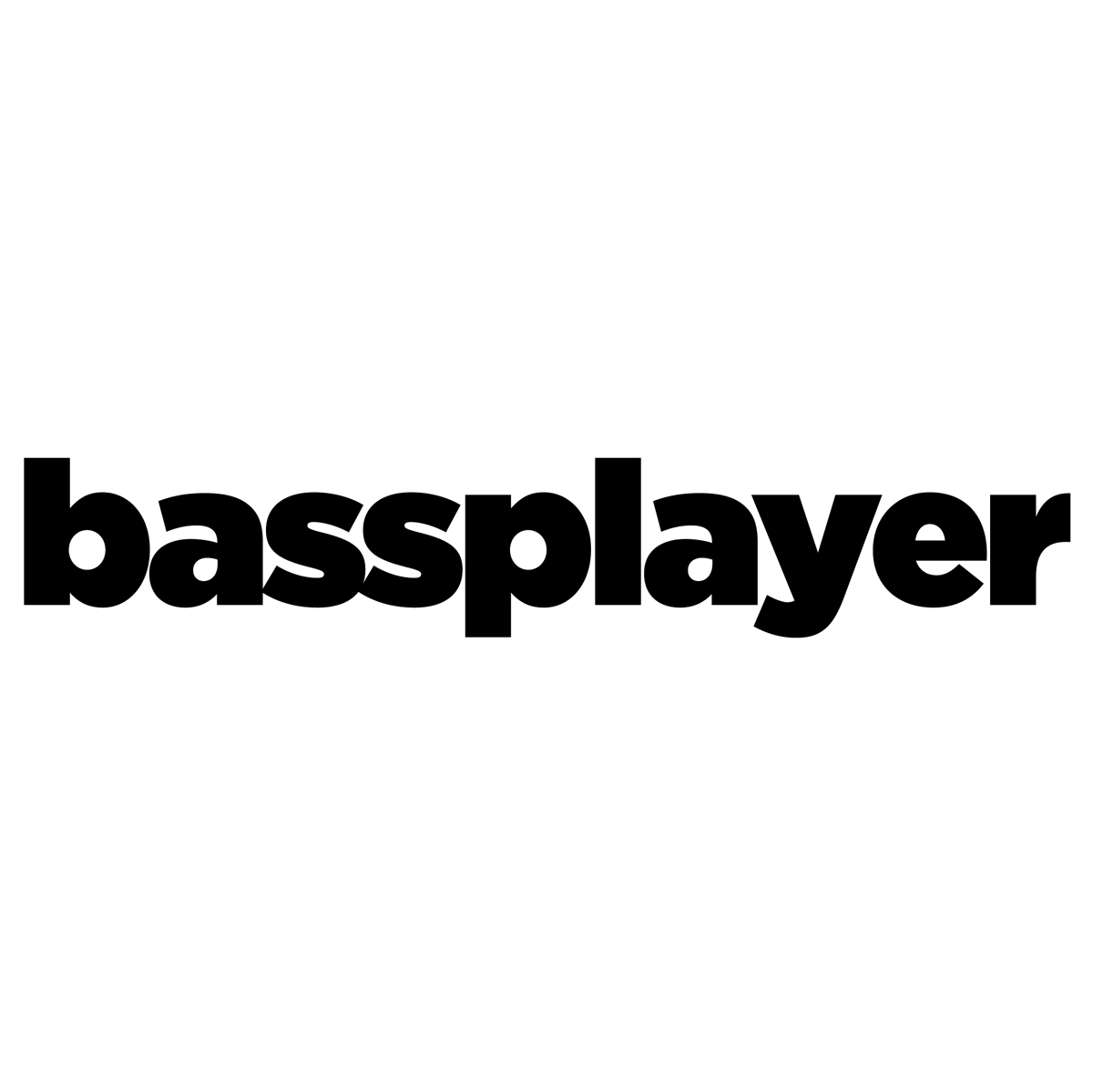The Who bassist Jon Button talks stepping into the shoes of John Entwistle and Pino Palladino
The touring bass player for the British rock legends – not to mention Sheryl Crow and Shakira – on the evolution of his playing and his onstage rig

Jon Button has a long resume of gigs with artists such as Sheryl Crow, Shakira, Mandy Moore, James Blunt, and Robben Ford. His most recent gig with The Who saw him faced with the daunting task of playing the bass parts of the much-missed John Entwistle.
Did the gig with The Who come about because you’d already played with Roger Daltrey, Jon?
“Yes. I’d been playing with Roger for eight years, and obviously that included playing songs by The Who.”
What does it feel like to step into the shoes of John Entwistle and Pino Palladino?
“No pressure, right? Haha! I try not to think about it too much. I’m not trying to be either of those guys, because I can’t be either of them. I feel like I do me, with a large tip of the hat to John, but I’m not trying to be a replica of him. Nobody can be, and Pete [Townshend] and Roger absolutely don’t want me to be.”
Do you try to replicate Entwistle’s tone, though?
“To an extent, yes. I definitely go for a brighter sound with round-wounds and distortion. I don’t get a lot of direction with that, though – they’re like, ‘Do what you do.’ It’s like that with most bands, so I think I have a pretty good gauge for what needs to happen.”
Get The Pick Newsletter
All the latest guitar news, interviews, lessons, reviews, deals and more, direct to your inbox!
Do you stick meticulously to the original bass parts, or do you bring your own interpretation?
“There are certain things that absolutely need to be there. For example, with the song The Real Me, I play probably 80 percent of what John did on the record – and when he played it live, he stayed pretty close to what was on the record too. On most of the material, there are signature parts that need to be there – hooks and whatnot – but a large part of it, I would say 70 or 80 percent, is improvised within a certain framework.“
When it comes to the famous bass solo in My Generation, even Entwistle didn’t play it the same way live as it was on the record.
“Right – and I don’t play it note for note at all. I try to change it a little bit here and there. I usually play that first lick pretty close to the original – not exactly, but pretty close – and the rest I play somewhere in the realm of what he did. Pete really likes that. When you do something unexpected, you might get a little look from him – like, ‘That was different and cool.’”
At the opposite end of the spectrum, you’ve got much simpler lines like Baba O’Reilly.
“You know, I even find that challenging, because I want to get a certain tone on every note and have every note be right in the pocket. Something that’s that simple can be a challenge, because you want it to be perfect every time, you know. I really focus on that and try to make every note powerful, because the bass is pretty exposed. In the beginning, it’s just me and the piano, and if you’re playing those three notes in a stadium, it’s all you.”
What’s your bass of choice with The Who?
“I play a 1965 P-Bass. I went out one day in the late-'90s to this one little area in Hollywood where there were a number of vintage guitar shops. I went and played all the basses I could find, and I really liked this particular one. I’ve used it on everything. I just put that on, and that’s it. It translates in a mix really well. It sits in a place where you can hear everything, but it’s not super harsh. It feels like home to me.”
What else is in the chain?
“When I initially started with The Who, my rig was an Ampeg SVT, and then I split my signal and added a Suhr amp – a 50-watt head with a single 12” cab, cranked up so it sounds like a Marshall. I ran those on full, and that was amazing. But for the last tour, we were with a full orchestra, which meant there were 20 or more condenser mics within three feet of me, so I switched over to the Line 6 Helix. That has two channels, so it enables me to do what I was doing before; I use it to create an SVT model and a Marshall model. I send those separately to the front of house.”
Is there another Precision as backup?
“Yeah, I have a Fender American Original. It’s killer. I’ve always been pretty old-school when it comes to basses. I was lucky enough to get a Frankenstein ’64 Jazz bass when I was 16. Before that, I had a Rickenbacker, which I ended up using with Sheryl Crow on a few songs.”
She’s a great bass player, too.
“Yes, she can play anything on any instrument. She knows her theory inside and out, and she’s got incredible time and feel.”
Sheryl Crow can play anything on any instrument. She knows her theory inside and out, and she’s got incredible time and feel
Who were the bass players you admired when you were starting out?
“I was a Jaco fan real early on. Somebody gave me his first solo record and I was like, ‘What is this?’ It’s such a good record, with fantastic playing. I got really into James Jamerson in high school, but it’s funny, I didn’t really grow up with The Beatles, so I learned about McCartney when I was in my early 20s, sadly. The same with Entwistle – I didn’t get into The Who until later on. I liked Carol Kaye, because I wanted to be a session player when I was at high school. I was also into Will Lee and Marcus Miller, and those other session guys.”
Which do you prefer, live or studio?
“I do love touring, but I also love going in the studio and being creative. Often, when I do a session, somebody comes in with an acoustic guitar and the vocal, and my job is to come up with the bass parts and help with the arrangements and stuff. It’s really creative, which I like.”
Do you find that as the years pass, you play bass differently?
“Yeah. Playing with Roger for eight years, and then The Who for another few years, has totally changed my playing. I’m always working and practicing and trying to figure out new stuff. I like to work on my time and pocket and finding a certain feel.
“I’ll hear some music and think, ‘Wow, that sounds challenging – I’m not sure if I could nail that.’ Maybe it’ll be some kind of New Orleans, swung, crazy, swampy thing. I’m like, ‘Can I do that? I don’t know.’ So I’ll find some song that has a cool feel that I feel I need to work on, and I’ll EQ out some of the bass and record myself along with it. I’ll listen back and think, ‘That sucks. Try again!’ I do a lot of that.”
Is your technique improving?
“I’ve been working on that. With The Who, there is some really fast sixteenth-note stuff. I had trouble getting that to happen, so I ended up using the first and third finger of my right hand, especially up on the G string. I left out my second finger because somehow those two didn’t go as fast. It’s weird. So I worked on that for a while and then I was like, ‘Well, I’m getting my third finger together – why don’t I just learn to play with three fingers?’ So I’ve been working on that over the past few months.”
Have you always been a bass player, or have you done other jobs?
“I have never had a real job in my life – I’ve always been on tour or in the studio. I guess that’s something to be proud of... but it’s also kind of scary!”
Bass Player is the world’s most comprehensive, trusted and insightful bass publication for passionate bassists and active musicians of all ages. Whatever your ability, BP has the interviews, reviews and lessons that will make you a better bass player. We go behind the scenes with bass manufacturers, ask a stellar crew of bass players for their advice, and bring you insights into pretty much every style of bass playing that exists, from reggae to jazz to metal and beyond. The gear we review ranges from the affordable to the upmarket and we maximise the opportunity to evolve our playing with the best teachers on the planet.
“When I first heard his voice in my headphones, there was that moment of, ‘My God! I’m recording with David Bowie!’” Bassist Tim Lefebvre on the making of David Bowie's Lazarus
“One of the guys said, ‘Joni, there’s this weird bass player in Florida, you’d probably like him’”: How Joni Mitchell formed an unlikely partnership with Jaco Pastorius










